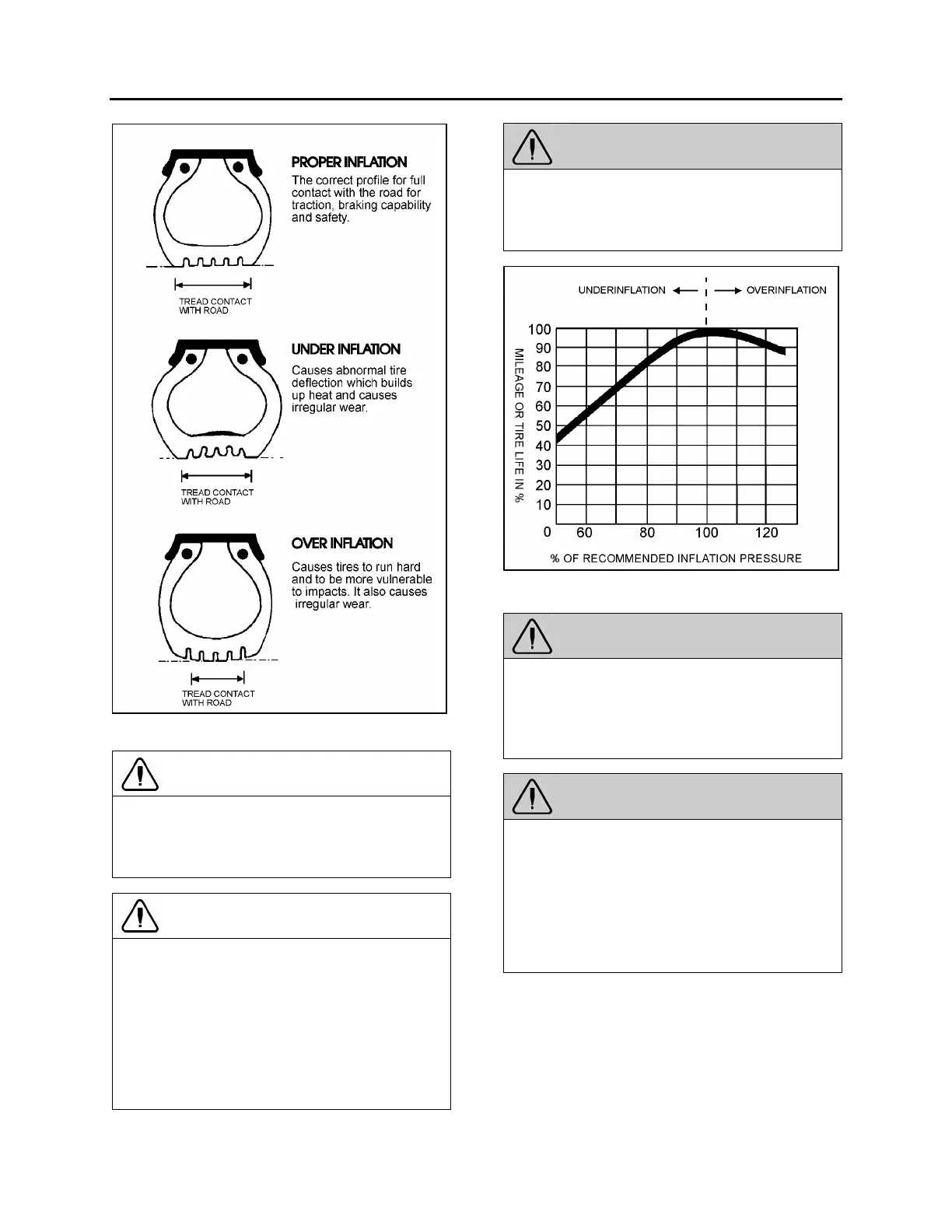Section 13: WHEELS, HUBS & TIRES
PA1553
9
FIGURE 6: TIRE INFLATION 13009
CAUTION
Never bleed air from hot tires as tires will then
be under inflated. Use an accurate tire gauge
to check pressures (Do not kick tires as an
inflation check. This is an unreliable method).
CAUTION
These tire pressures are established in
accordance with the maximum allowable load
on each axle. A lower pressure is recom-
mended if the axle load is less than the above
specifications. Weigh vehicle fully loaded and
pressurize according to tire manufacturer's
recommendations. For other tire and wheel
specifications, see Prévost tire pressure
tabulation in "Coach Final Record".
WARNING
Incorrect tire pressures cause increased tire
wear and adversely affect road holding of the
vehicle, which may lead to loss of vehicle
control.
FIGURE 7: TIRE LIFE / INFLATION PRESSURE 13010
WARNING
Recommended tire inflation pressures and
maximum allowable loads apply to speeds up
to 65 mph (105 km/hr). Do not drive vehicle at
a higher speed than 65 mph (105 km/h) or
above the posted speed limit.
WARNING
All tires on the same axle should always be
inflated to the same pressure. There should
not be a difference in pressure between right
and left tires on the same axle. A 5-psi (35-
kPa) underinflation in one front tire can not
only reduce vehicle maneuverability, but will
create steering hazards which can lead to an
accident.
11.2 TIRE MATCHING
Unmatched tires on drive axle will cause tire
wear and scuffing, as well as possible damage
to the drive unit. Consequently, we recommend
that tires be matched within 1/8" (3 mm) of the
same rolling radius.

